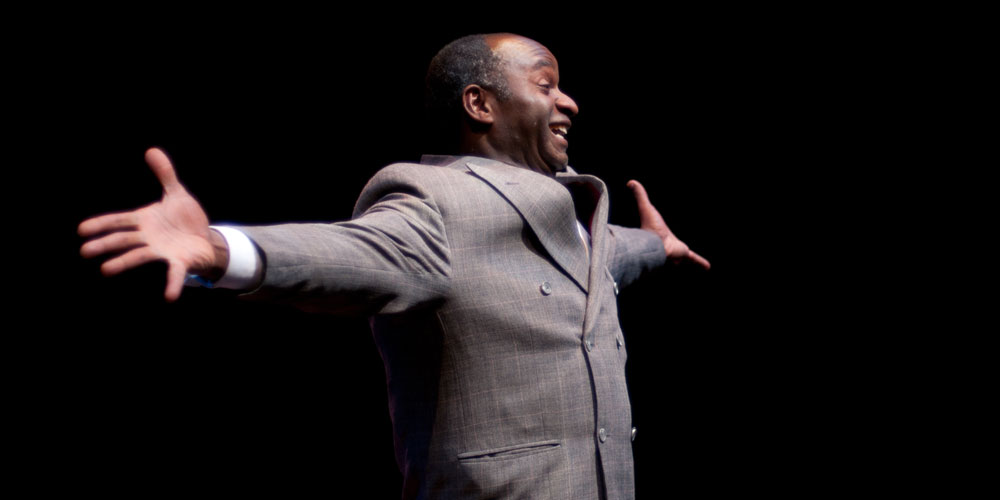Jim Crow, social justice, gentrification, police brutality, black on black crime and mass incarceration are just a few of the topics Hofstra graduate student Brandon Johnson covered in his performance “A Vanishing Act,” during the Black History Month Symposium on Feb. 28.
The symposium was put on by the Hofstra Cultural Center and the Department of Rhetoric as a way to perform politics while embodying advocacy – representing race. The director behind this symposium was Lisa Merrill, a rhetorical studies professor.
“This [symposium] was actually a pipe dream I had a year ago,” Merrill told the audience as the daylong symposium began. She explained that with the help and support of the Hofstra Cultural Center her dream was able to become a reality.
The symposium consisted of multiple speakers, including Dr. Soyini Madison, Dr. Larry Bogad, Hofstra Professor Bill Jennings and many more. These speakers led up to the final show of the evening “Call Mr. Robeson,” written and performed by Tayo Aluko.

Prior to this performance, the Black History Month symposium featured a number of other performances including Brandon Johnson’s.
What was most unique about this performance was that Merrill used these pieces as a way to open for the speaker of each section of the symposium.
This new and innovative form of introduction immediately captured the audience’s attention as Johnson performed his piece, which was a combination of three other pieces.
The performance, entitled “A Vanishing Act,” outlined many of the struggles found in the African-American community, primarily for African-American men. His performance covered a wide range of topics switching constantly between three distinct characters.
For some, the switching of characters may have felt like whiplash, however I felt that it forced the audience to stay involved in the performance by listening as these voices weaved together into one story.
“Dead men can’t be witnesses,” Johnson said, in reference to police brutality and the increasing number of African-American males being killed by police officers.
His characters moved between one of a fed-up black woman to a black male begging for his life. “Don’t let them shoot me where I’m standing … don’t let chalk lines outline me.”
As the performance continued, the imagery and pain felt by each character strengthened, building a relatable connection for the audience.
To further express the emotion within Johnson’s performance, Madison felt the need to change her speech in order to compliment the issues he brought up.
Merrill’s idea to allow students to introduce speakers through performance brought a new look to the policies and identities being presented. They captured the audience’s attention and emotion in such a way that allowed them to truly perform politics.
